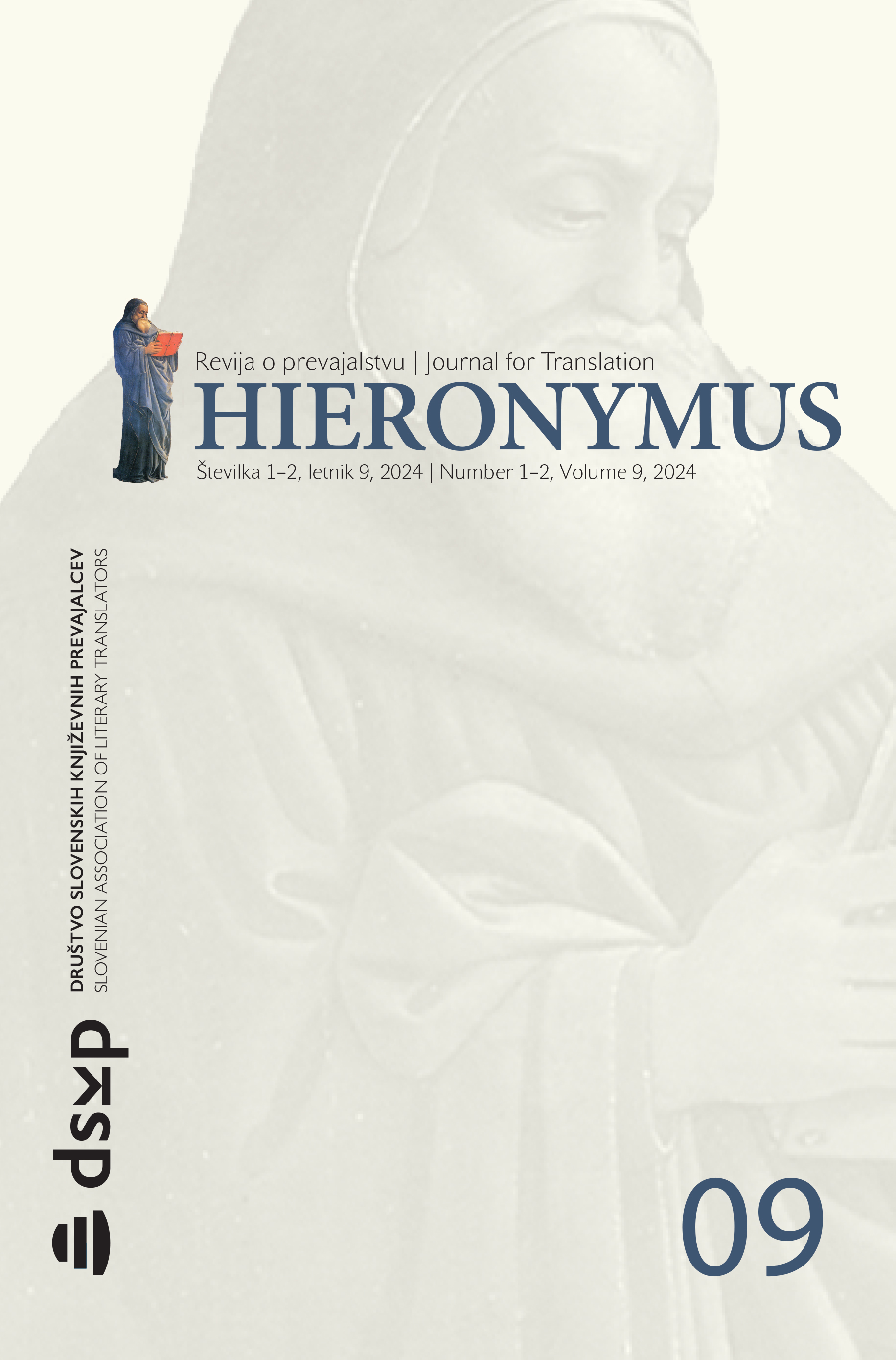Sleng kot prevajalski izziv v romanu Varuh v rži
Keywords:
J. D. Salinger, slengizem, prevodni premik, stilistikaAbstract
The Catcher in the Rye by J.D. Salinger is a renowned work of American literature, known for its existential themes and the use of New York City slang from the post-World War II era. Slang poses challenges for translators, not only due to cultural and sociolect differences but also because it rapidly evolves. This paper examines translation solutions for slang elements in the introductory paragraph of The Catcher in the Rye. The novel features Holden Caulfield, a teenager who describes his three-day journey in New York City, challenging the adult world’s phoniness. Critics have highlighted the use of slang in the novel, which reflects the language of 1950s New York City youth. Slang’s multifaceted nature in the text presents translation challenges. The paper compares three Slovenian translations of the novel’s opening paragraph, analyzing how slang is handled in each version. It focuses on slang elements such as idioms, informal vocabulary, and expressions. The first translation by Milka Mirtič-Saje was published in 1966, followed by Boris Jukić’s 1990 translation and a revised version in 2002. The analysis reveals variations in translation strategies. In the 1966 translation, some slang elements are translated neutrally, losing the original tone. The 1990 version attempts to capture more informal language but introduces some unnatural expressions. The 2002 revision improves the use of slang and introduces contemporary terms like keš (cash), which reflects the evolving nature of slang (in translation). In conclusion, translating slang presents challenges in preserving the original tone and meaning while adapting to the target culture. The study highlights the importance of considering the evolving nature of slang and the translator’s role in capturing the authenticity of the source text in the target language.
Downloads
Published
Issue
Section
License
Copyright (c) 2025 Hieronymus

This work is licensed under a Creative Commons Attribution-ShareAlike 4.0 International License.
